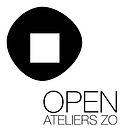the nature of colonized bodies
Este proyecto fue desarrollado durante una residencia artística en Open Ateliers Zuidoost (Ámsterdam). La propuesta artística, titulada La naturaleza de los cuerpos colonizados, surge desde lo alterno y se configura como una respuesta crítica al contexto específico en el que se llevó a cabo la residencia. La obra explora las relaciones entre el cuerpo, la memoria colectiva —tanto natural como etnográfica— y las huellas del colonialismo, reconociendo las tensiones y vínculos que emergen en estos espacios de intersección.





La naturaleza de los cuerpos colonizados
Memoria de Proyecto
Residencia artística en Open Ateliers Zuidoost, Ámsterdam.
En el marco de mi residencia en Open Ateliers Zuidoost, desarrollé un proyecto artístico titulado La naturaleza de los cuerpos colonizados, una investigación situada que toma como punto de partida el vínculo entre cuerpo, territorio y memoria. El barrio de Bijlmer, caracterizado por su diversidad cultural y su carga histórica, se convirtió en detonante de una búsqueda que me llevó a profundizar en las relaciones coloniales entre los Países Bajos y América del Sur.
Mi investigación parte del concepto de “cuerpos naturales”, entendidos como entidades simbólicas que encarnan memorias orgánicas, ancestrales y afectivas. Para abordar este universo, me apoyo en lenguajes que surgen desde la transformación y la experiencia encarnada. Estos lenguajes se manifiestan como una simbiosis entre el cuerpo humano y la mirada hacia el entorno. En este sentido, las acciones que llevo a cabo —ya sea a través de la representación del cuerpo, la proyección de la sombra o el registro del rastro sensible del pensamiento— funcionan como actos performativos que inscriben una narrativa personal y colectiva.
El contacto con el contexto surinamés y la simbología indígena presente en dicho territorio aportó elementos esenciales a mi investigación. A través de estos símbolos encontré planteamientos profundos sobre la relación entre el ser humano y la naturaleza, planteamientos que dialogan desde la oralidad, el gesto y lo espiritual. Esta conexión me permitió reinterpretar las huellas de esos cuerpos naturales, reconstruyendo historias y sentimientos que han sido olvidados o nunca visibilizados.
Mi propuesta se articula como una estrategia de recuperación de memorias silenciadas, una forma de escuchar la voz de la naturaleza cuando habla desde su experiencia y su memoria, en interacción con lo humano. El territorio aparece como un cuerpo que comunica ideas que atraviesan el deseo de ser decolonizado. En esta lectura crítica del espacio, el “centro” se presenta como una zona iluminada que tiende a invisibilizar la “periferia”, esa otra parte que sostiene, nutre y sin embargo permanece en la sombra. El centro brilla, pero olvida que sin la periferia no podría existir.
La interpretación de la naturaleza como cuerpo propone una experiencia estética en la que el entorno deviene contorno del yo. Esa frontera se transforma en ser y en sentir. Desde esta perspectiva, surgen preguntas fundamentales que guían la investigación: ¿Dónde buscamos los cuerpos naturales? ¿En la periferia oscurecida? ¿En el centro blanco?
Este proyecto se construye, entonces, como una cartografía sensible y simbólica que entrelaza corporalidades, territorios y memorias. Una invitación a mirar de nuevo, a escuchar lo silenciado, y a repensar la centralidad de los discursos desde una postura crítica y poética.
